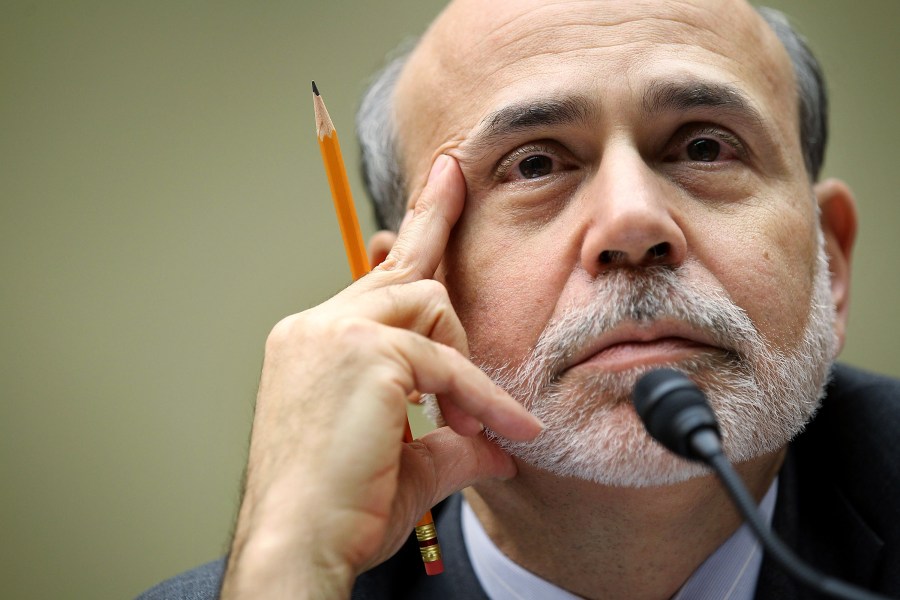(NewsNation) — Just 36% of Americans are confident that Federal Reserve Chair Jerome Powell is doing the right thing for the U.S. economy, according to a new Gallup survey.
That’s the lowest mark for a Fed chair since Gallup began the annual survey in 2001.
After a year of high inflation and rapidly rising interest rates, just 4% of respondents said they have a “great deal” of confidence in Powell and 32% said they have a “fair amount.”
The wavering belief in the current Fed chair reflects a broader pessimism toward the country’s economic leaders, the poll found. Just 37% of respondents have confidence in Treasury Secretary Janet Yellen and 35% said the same about President Joe Biden when it comes to the economy.
Here’s how confidence in Powell compares to other Federal Reserve chairs.
Alan Greenspan (1987-2006)

Highest confidence rating: 74% in 2001 (earliest year of available data)
Lowest confidence rating: 56% in 2005
First nominated by: President Ronald Reagan
The nation’s second-longest serving Fed chair was also one of the most popular during his time in charge. In 2001, 74% of Americans were confident Greenspan was doing the right thing for the economy, per Gallup.
Hailed by some as a “maestro” of the U.S. economy, Greenspan presided over a period of relatively stable inflation and macroeconomic growth, although that legacy has been called into question ever since global financial markets unraveled shortly after he left his position.
Following the dotcom bubble in 2000, the Fed lowered interest rates below 2% for three years, which some believe contributed to the subsequent real estate bubble.
Still, confidence in Greenspan was the highest for any Fed chair over the past 20 years despite falling to 56% near the end of his tenure in 2005.
Ben Bernanke (2006-2014)

Highest confidence rating: 50% in 2007
Lowest confidence rating: 39% in 2012
First nominated by: President George W. Bush
Bernanke oversaw the Federal Reserve during the Great Recession from 2007 to 2009. Under his guidance, the Fed lowered its benchmark interest rate to 0% in order to stimulate the economy.
During the financial crisis, the central bank took other aggressive actions to avoid further catastrophe — introducing quantitative easing and helping bail out major financial institutions. In the wake of the crisis, Bernanke pushed for more transparency and accountability at the Fed.
Confidence in Bernanke peaked at 50% in 2007 but hovered in the 40s for most of his tenure. When his second term ended in January 2014, 40% of Americans approved of the way he handled his job, according to Gallup.
Janet Yellen (2014-2018)

Highest confidence rating: 45% in 2017
Lowest confidence rating: 37% in 2014
First nominated by: President Barack Obama
Yellen became the first woman to lead the world’s most powerful central bank. During her time in charge, she prioritized job growth and kept the Fed’s key interest rate near historic lows.
In 2018, the unemployment rate hit a 17-year low of 4.1 percent and inflation remained low.
Some critics have argued the Fed kept interest rates too low for too long, which may have amplified the tumult brought on by rapidly rising interest rates over the past year.
Americans’ confidence in Yellen as Fed chair peaked in 2017, with 45% of survey respondents saying they thought she was doing the right thing for the U.S. economy. That was up 8 points from the start of her tenure in 2014.
Jerome Powell (2018-present)

Highest confidence rating: 58% in 2020
Lowest confidence rating: 36% in 2023
First nominated by: President Donald Trump
Americans’ confidence in Fed Chair Jerome Powell rose steadily over his first two years at the helm of the central bank, but has since plummeted amid historic inflation. In April 2020, the majority of Americans (58%) thought Powell was doing the right thing for the economy — the highest confidence level since Greenspan.
But as prices rose over the course of 2022, confidence in Powell fell. The Federal Reserve has responded by raising its key interest rate 10 times since March 2022. Those rate increases have made the cost of borrowing more expensive and led to uncertainty in the banking sector.
Year-over-year inflation fell to 5.0% in March. That’s down from 9.1% in June 2022 but still well above the 2% target rate.






